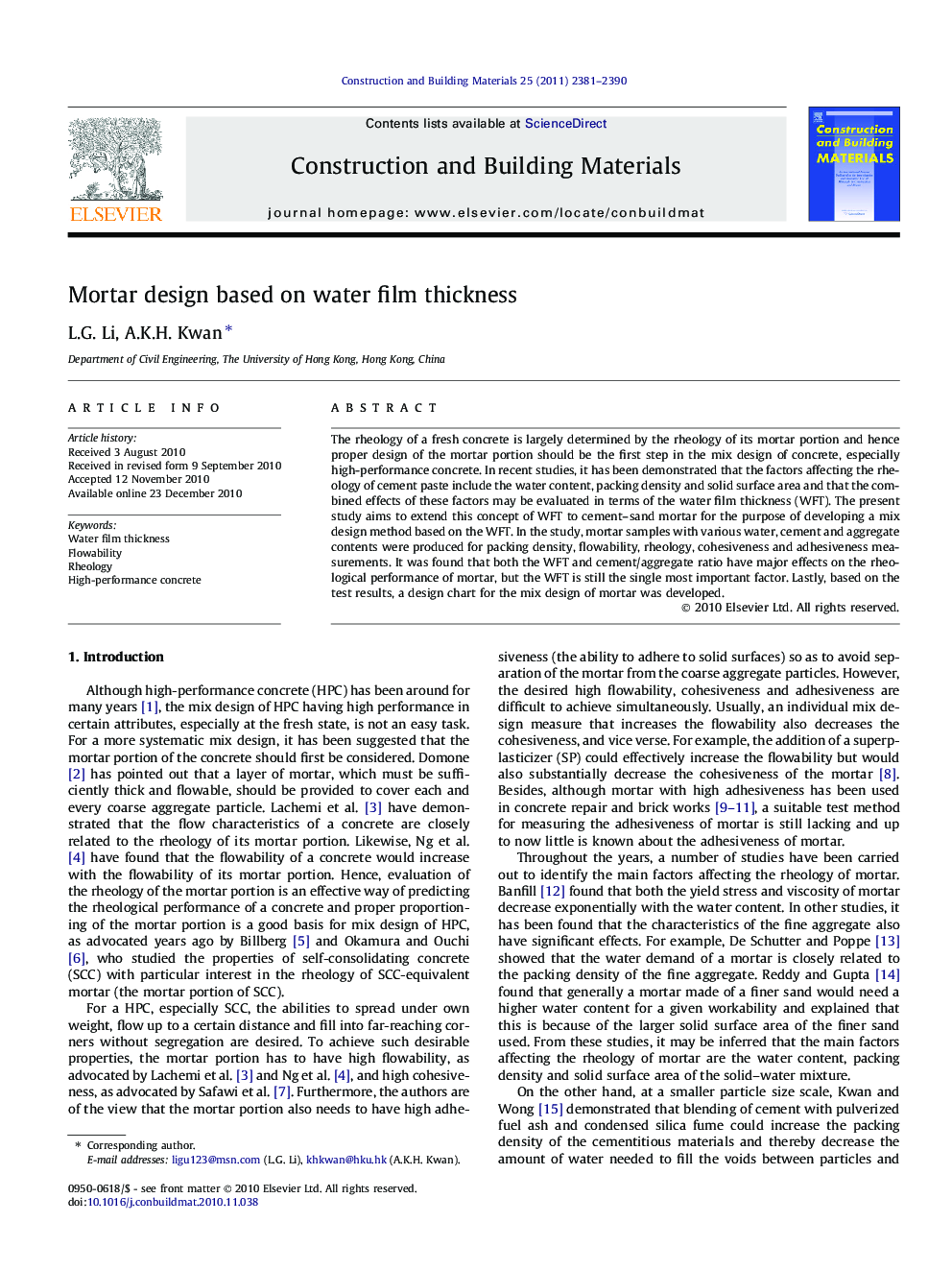| Article ID | Journal | Published Year | Pages | File Type |
|---|---|---|---|---|
| 259277 | Construction and Building Materials | 2011 | 10 Pages |
The rheology of a fresh concrete is largely determined by the rheology of its mortar portion and hence proper design of the mortar portion should be the first step in the mix design of concrete, especially high-performance concrete. In recent studies, it has been demonstrated that the factors affecting the rheology of cement paste include the water content, packing density and solid surface area and that the combined effects of these factors may be evaluated in terms of the water film thickness (WFT). The present study aims to extend this concept of WFT to cement–sand mortar for the purpose of developing a mix design method based on the WFT. In the study, mortar samples with various water, cement and aggregate contents were produced for packing density, flowability, rheology, cohesiveness and adhesiveness measurements. It was found that both the WFT and cement/aggregate ratio have major effects on the rheological performance of mortar, but the WFT is still the single most important factor. Lastly, based on the test results, a design chart for the mix design of mortar was developed.
Research highlights► The flowability, rheology, cohesiveness and adhesiveness of mortar were studied. ► These properties were correlated to the packing density and water film thickness. ► It was found that the water film thickness is the single most important factor. ► In addition, the cement/aggregate ratio is also an important factor. ► Based on the test results, a design chart for mix design of mortar was developed.
